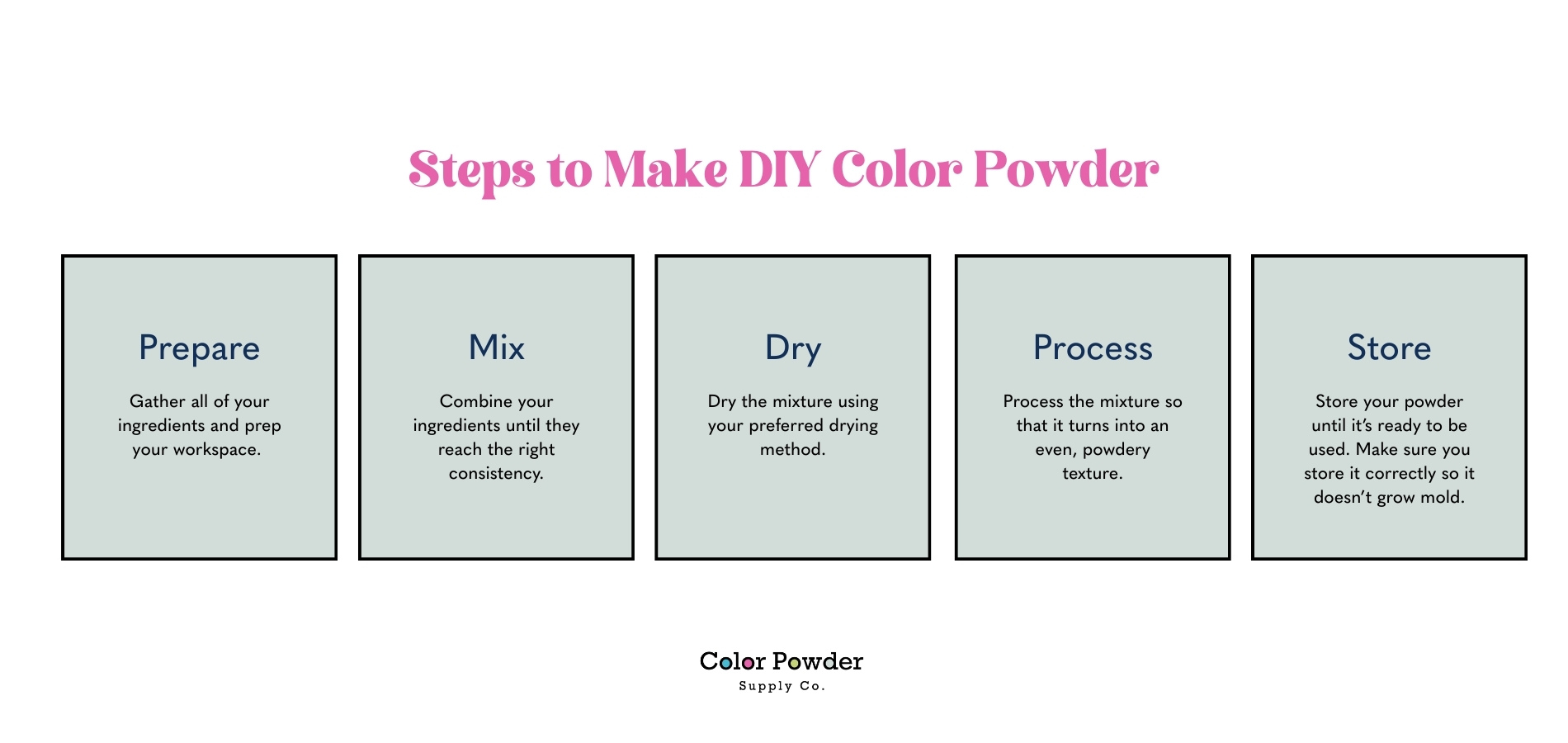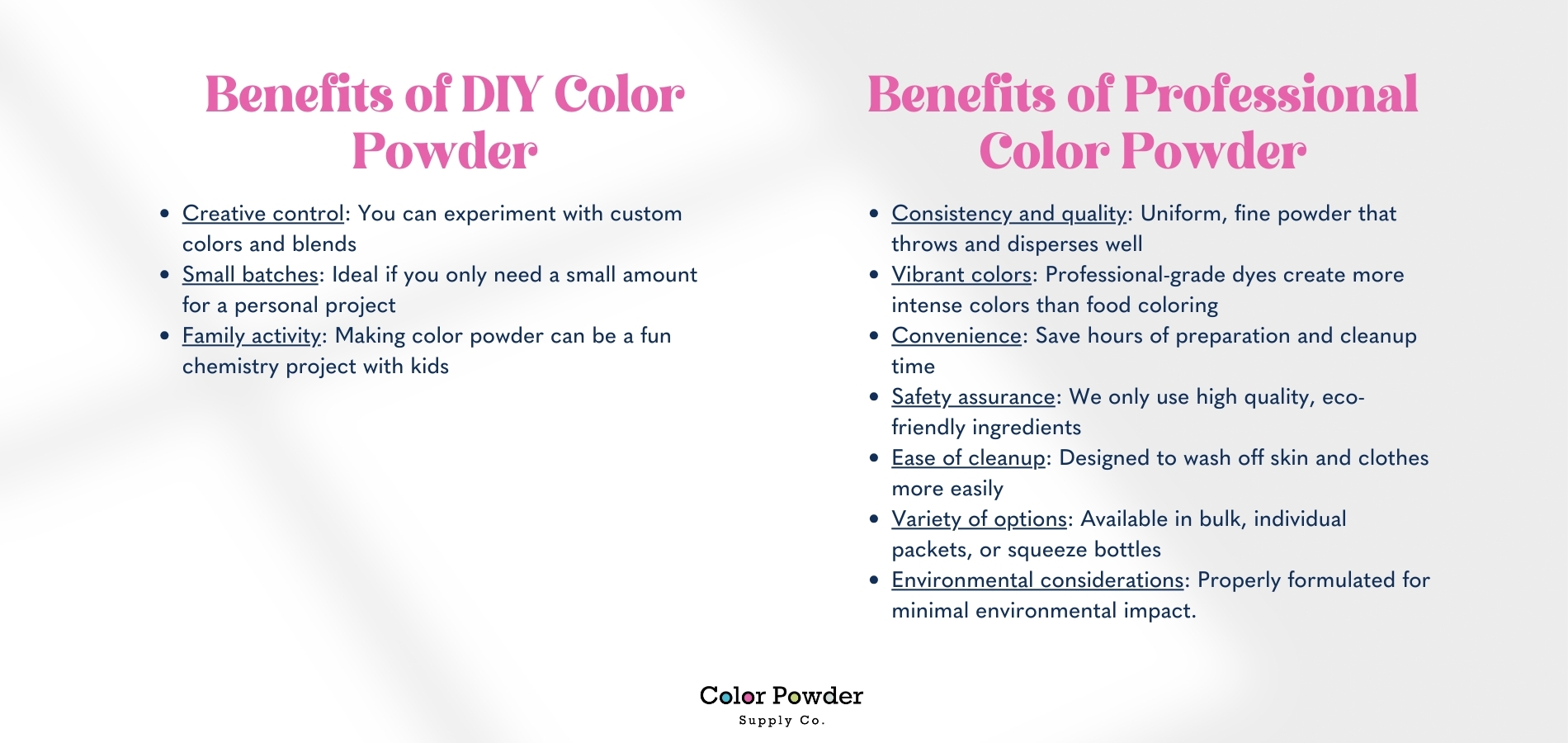- 833-265-6771
- Mon - Fri: 8:00 - 5:00 EST
(Updated March 1, 2025)
Color powder has become a popular staple for a wide range of events including festivals and celebrations of all sizes. It’s vibrant, fun, and can be used for a ton of different activities. But is the DIY color powder route really worth the time, effort, and potential mess? Let’s learn more about what it takes to create color powder at home and help you decide if it’s the right choice.
DIY color powder has just a few basic ingredients, most of which you can find at the grocery store.
Basic Recipe (Makes approximately 1 pound):
For a Larger Batch (Makes approximately 4 pounds):
You’ll Also Want Equipment:
Here’s a realistic guide to making your own color powder:
Start by clearing a workspace. Remove anything you don’t want covered in a fine layer of cornstarch powder. Lay down old newspapers or tablecloths to protect surfaces. Put on old clothes and protective gear – food coloring stains are extremely difficult to remove.
Carefully pour the cornstarch into a large bowl (pour slowly to avoid creating a cloud of powder). Gradually add water while stirring to create a thick paste – think peanut butter consistency, not pancake batter. Add food coloring a few drops at a time until you achieve your desired color intensity. Remember that the powder will appear lighter when dried.
There are two main methods for drying:
Air Drying Method:
Oven Method:
Once completely dry, break the hardened mixture into pieces and process in a food processor or blender until it becomes a fine powder. Work in small batches and be careful – this step creates the most airborne powder.
Store your finished powder in airtight containers or ziplock bags until ready to use. Keep in a cool, dry place.

Let’s break down the costs:
For a 4-pound batch, materials cost anywhere from $22-$28 plus tax (depending on where you shop). For comparison, we sell our bulk color powder at about $6.25 per pound, or $25 for 4 pounds (at the time of this post).
This means DIY color powder may or may not save you extra money. In fact, you’re more likely to be in the red unless you:
I don’t know about you, but it doesn’t quite seem worth it – especially if you need a large amount of color powder for an event.
Making your own color powder means that you know exactly what you’re putting into it. But is it safe? That depends on the quality of your ingredients, how you store the powder before use, and how you use it.
At Color Powder Supply, we make sure that every batch of color powder is made with the highest quality ingredients. It’s non-toxic, eco-friendly, and easier to clean than most of our competitors (DIY powder included).

So, is it worth it to make your own color powder?
DIY might be worth it if:
Buying commercial powder is likely better if:
While making color powder at home is completely doable, the experience comes with challenges. For most people planning color events, the time, effort, and potential issues involved often outweigh the minimal cost savings of the DIY approach.
For events of any significant size, professionally manufactured color powder offers better quality, safety, and convenience. The extra dollar per pound provides peace of mind, more vibrant colors, and far less hassle – allowing you to focus on planning an amazing event rather than spending days in your kitchen covered in cornstarch.
Whether you choose the DIY route or professional color powder, we hope your colorful event is a success!